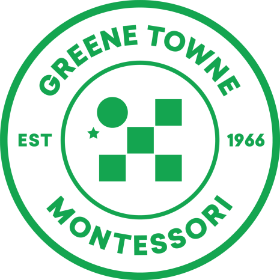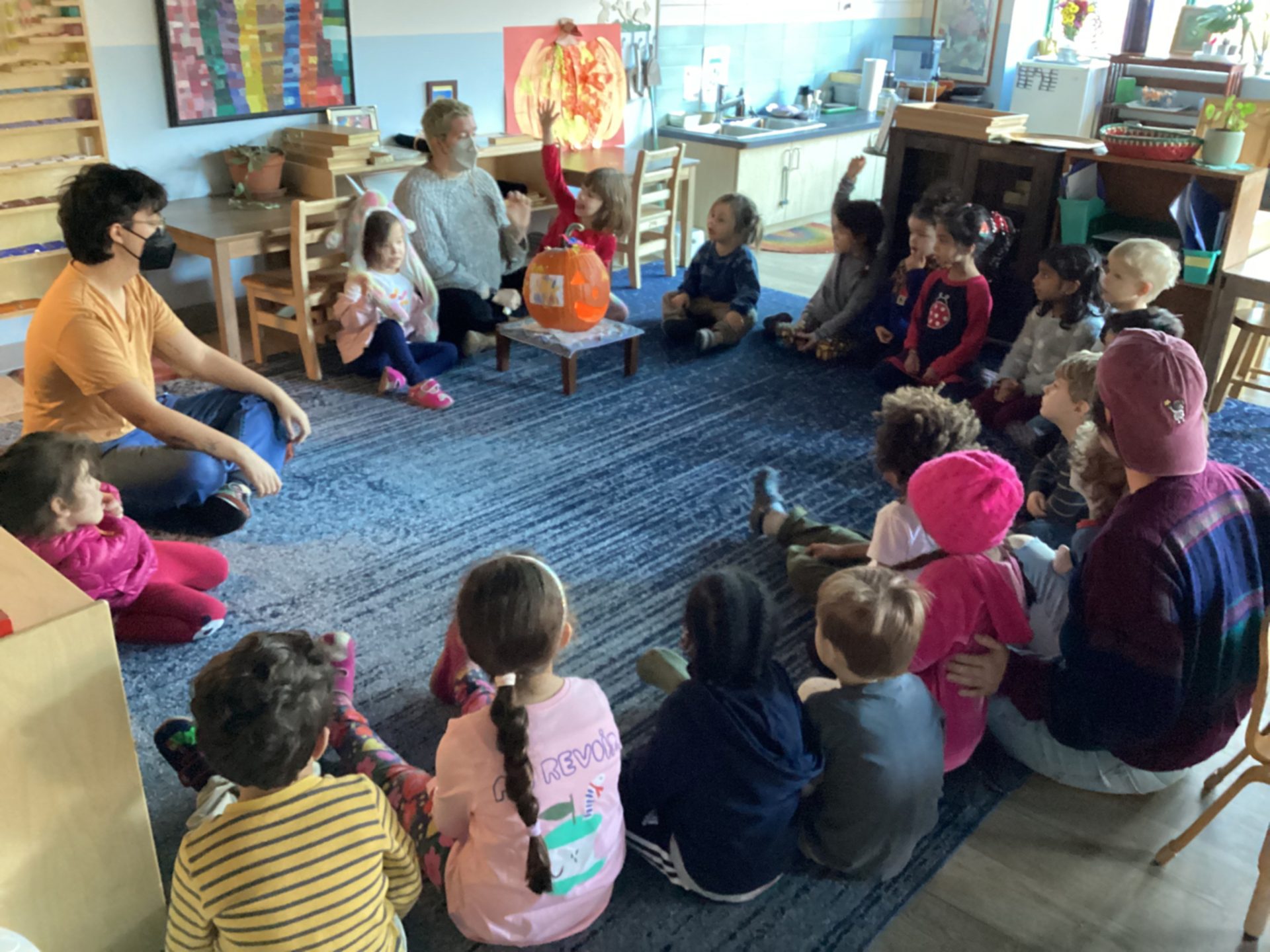
That’s a question we hear a lot throughout the day. We thought you might be interested to hear about the types of activities we do at Circle. In this blog, we are going to talk a bit about what we typically do at Circle and why. We will discuss the ways in which each circle differs and, of course, share pictures! At the end we have a suggestion for home.
We have three collective gatherings a day- one in the morning, one before lunch, and one in the afternoon. We refer to these as “Circle”. Circle is a chance for our community to come together and have a shared experience. It might be a meditation, a conversation, a birthday celebration, a science experiment, etc. These are important community events. We try to keep Circle around 15 minutes or less. It’s enough time for us to do something meaningful but not so long that children struggle to sit still.
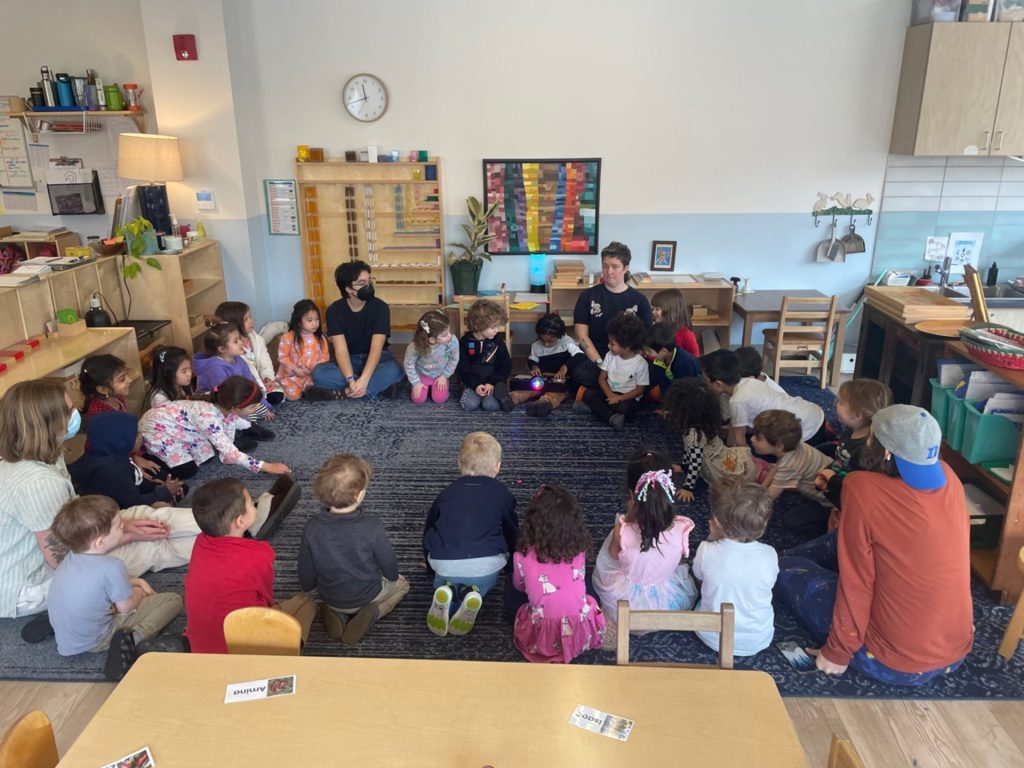
What types of activities do we do at Circle?
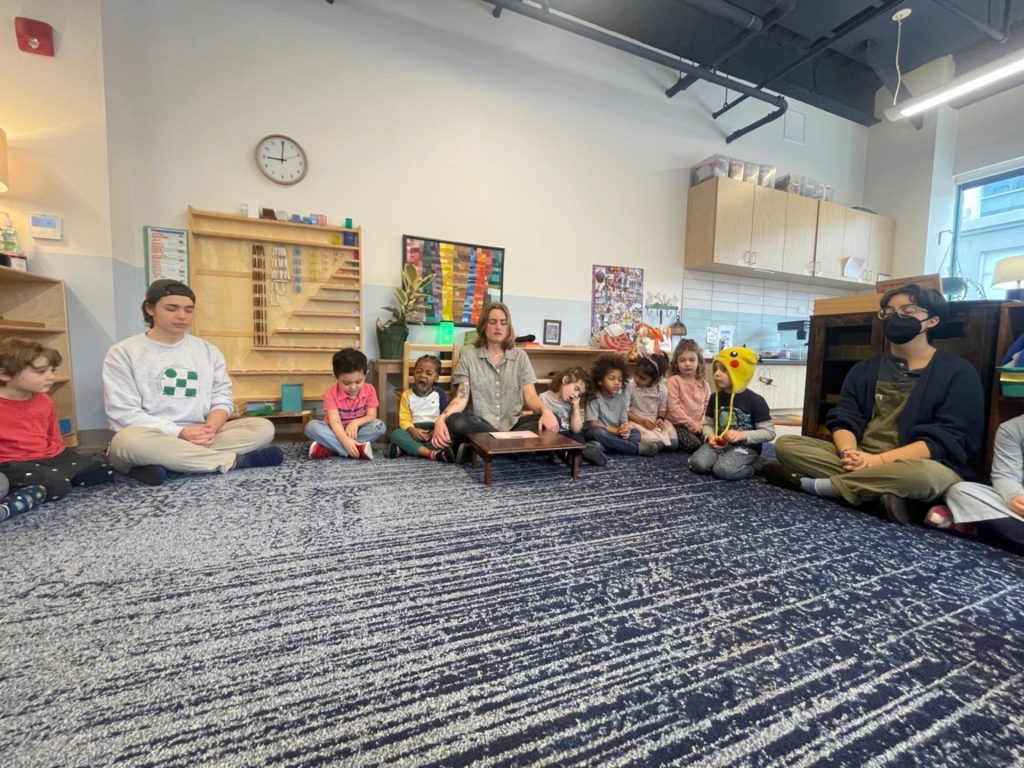
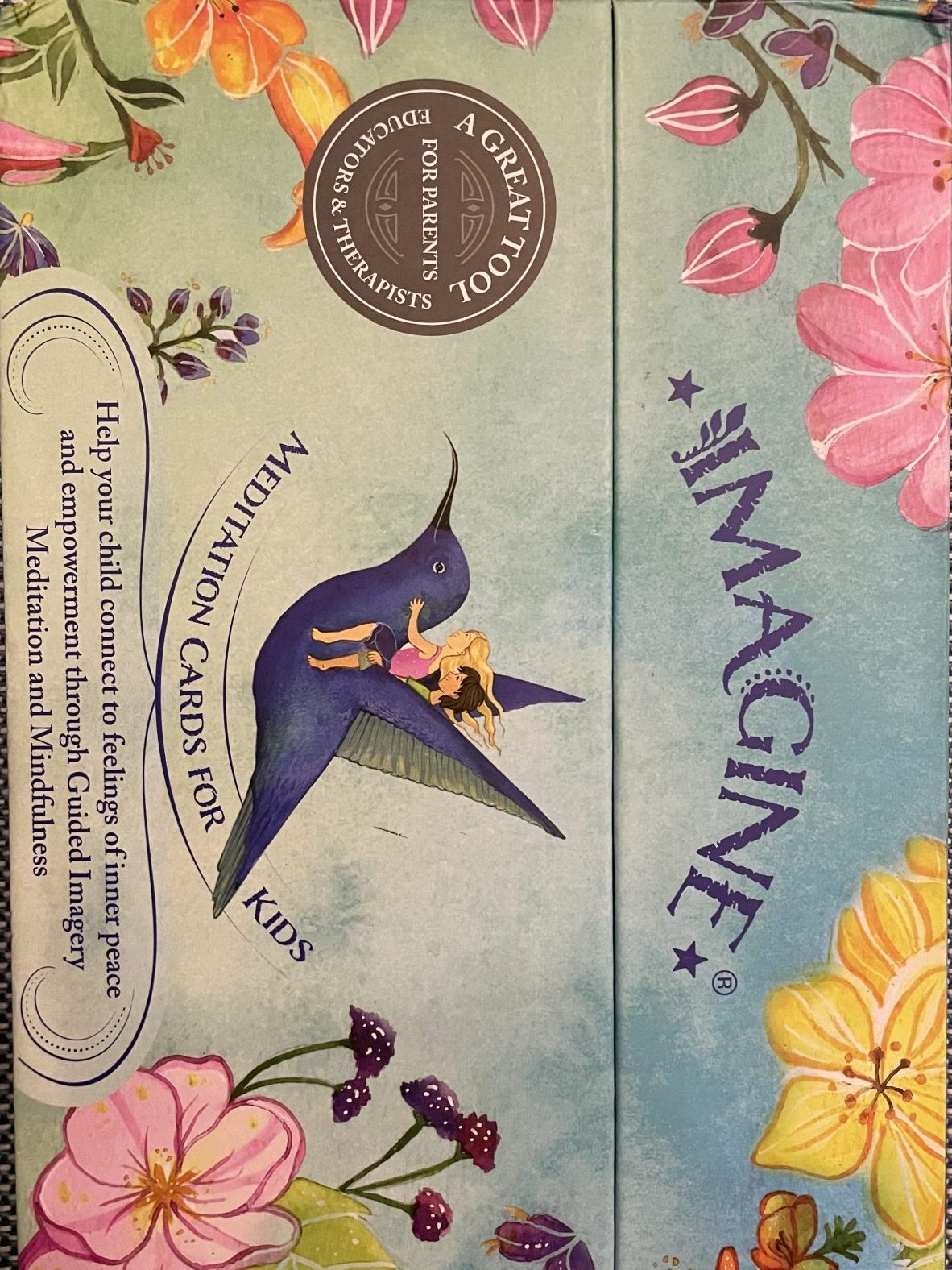
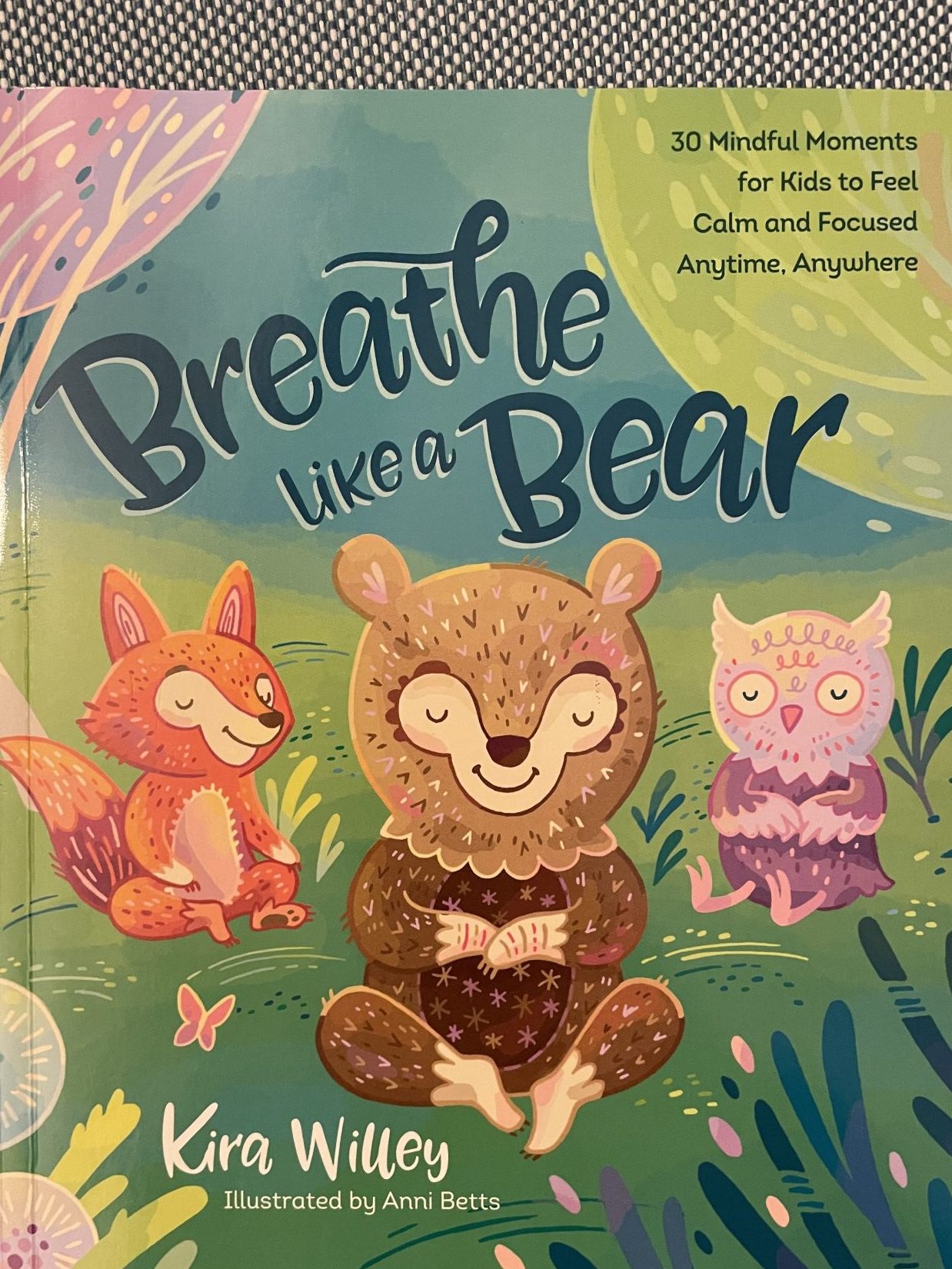
Meditation- We try to do some meditation as a whole group a few times a week. We meditate together for five minutes or less. Sometimes we use the Calm App or Mind Yeti, sometimes we read from ‘Breath Like A Bear’ or the “Imagine Meditation Cards”, sometimes a teacher guides the group. After the meditation, the children like to share how they feel.
Breathing Exercises- This is similar to when we practice meditation together. The children have learned several different techniques- and invented some of their own as well! They can choose to do Box Breathing (in for 4, hold for 4, out for 4, hold for 4), Butterfly Taps (arms crossed, hands on chest, tapping one hand on the inhale and the other on the exhale), Tracing Fingers (breathing in as you trace up your finger and out as you trace down your finger), Ocean Breath (in through the nose and out through the mouth making a wave noise), Dragon/Lion Breath (deep breath in through the nose and forced exhalation with a wide open mouth, tongue out), or any other type of deep breathing they can think of. We typically take 5-10 breaths together. We might discuss how we feel before and after taking the breaths together.
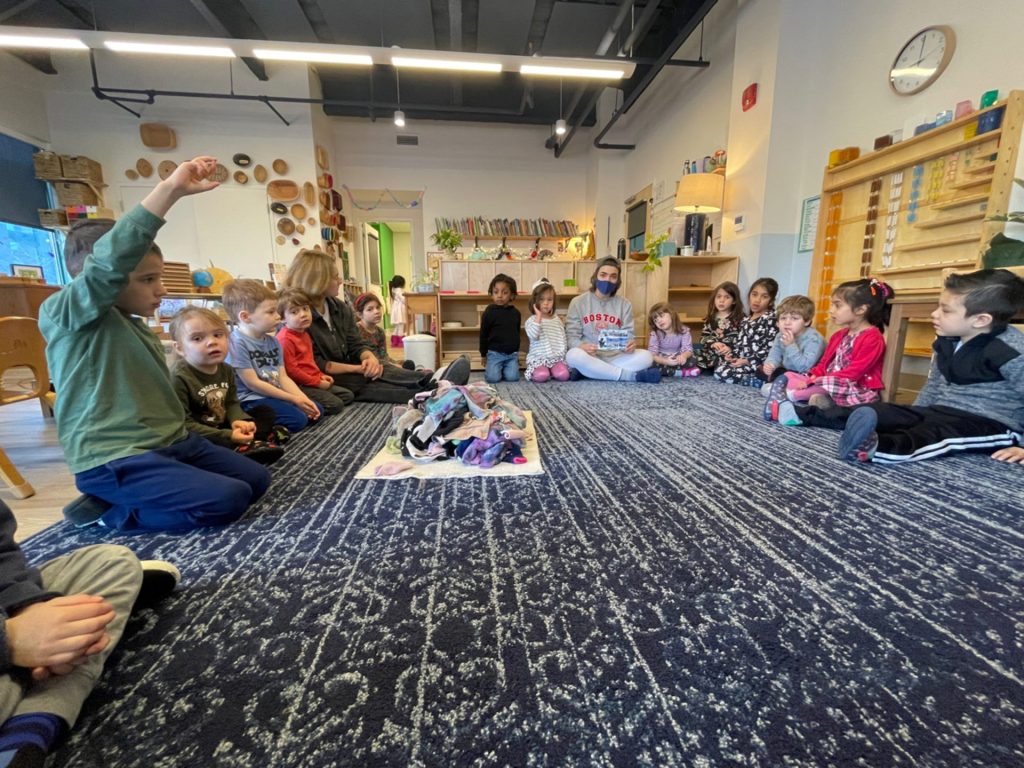
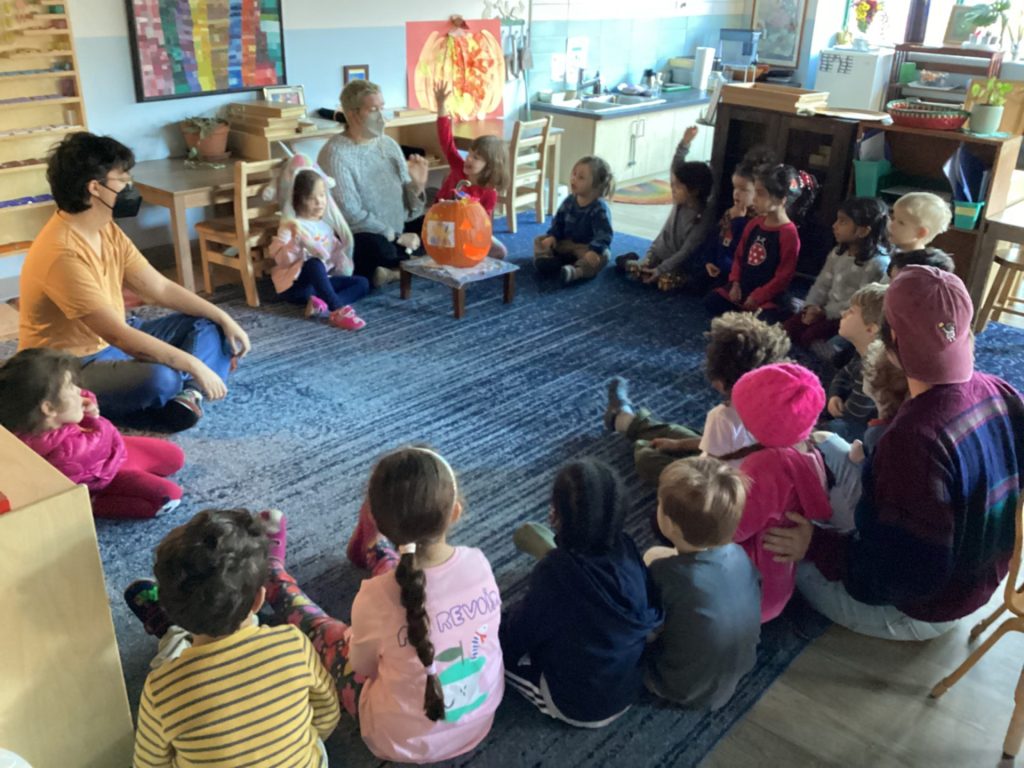
Conversations- Sometimes we need to come together as a community to discuss an issue or share an upcoming event. These topics are typically raised by the adults but the conversations are led by the children. We discuss things like children not returning their pencils to the designated pencil cups, bathroom etiquette, expectations around snack, etc. Recently, the children agreed as a community on what to do if someone gets out of line but then wants their spot back. The children put forth ideas, voted, and agreed that if they ask for their spot back, they can have it. We find that when the decision is child-led, everyone has a much easier time abiding by the expectation. From now on, all the adults and children need to say is, “We agreed as a community.”
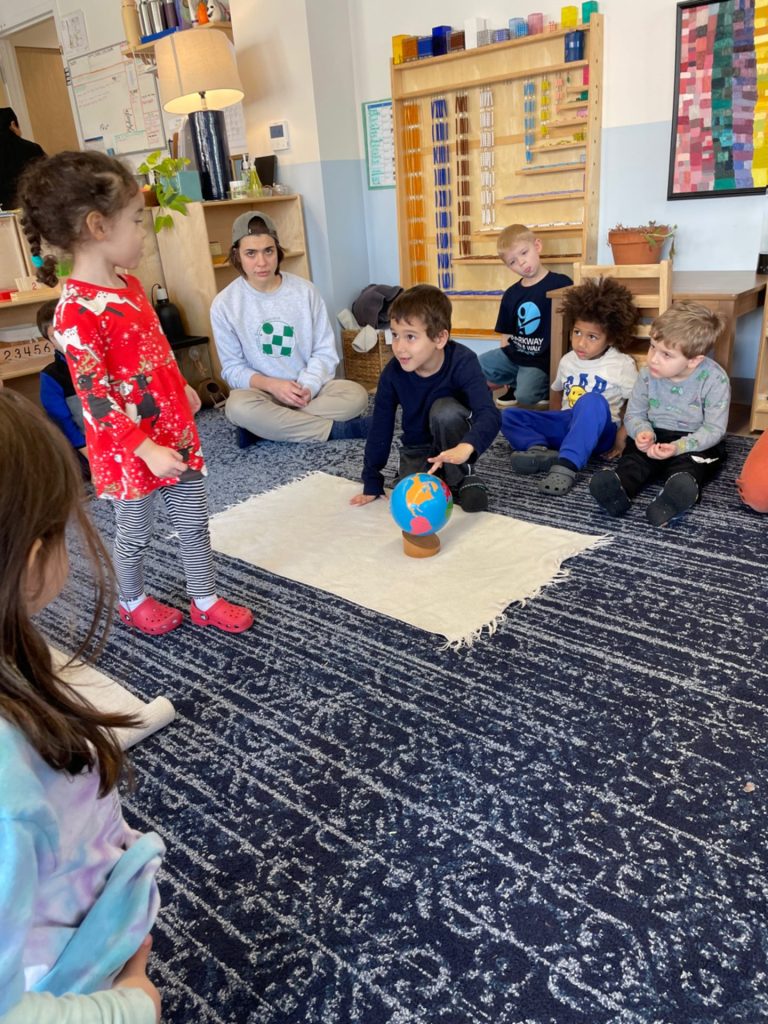
Grace and Courtesy- We often do short Grace and Courtesy lessons at circle. We may pick one at random from our bowl of lessons or we might choose to do one in a more targeted way. Perhaps the adults have noticed a lot of shoving rather than saying “excuse me”, that’s when we would do a Grace and Courtesy lesson about “how to say excuse me”. These are short roleplay activities that allow the children to practice the language and movements associated with maintaining our social cohesion. They practice things like how to ask for a hug or how to fit through a tight space.
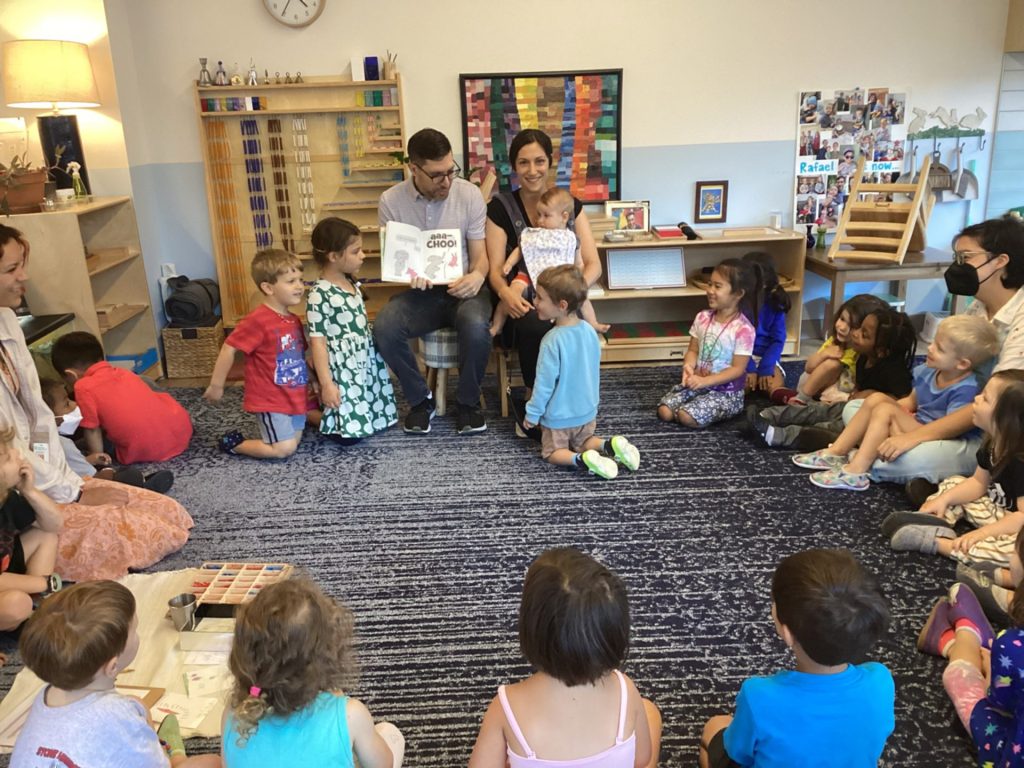
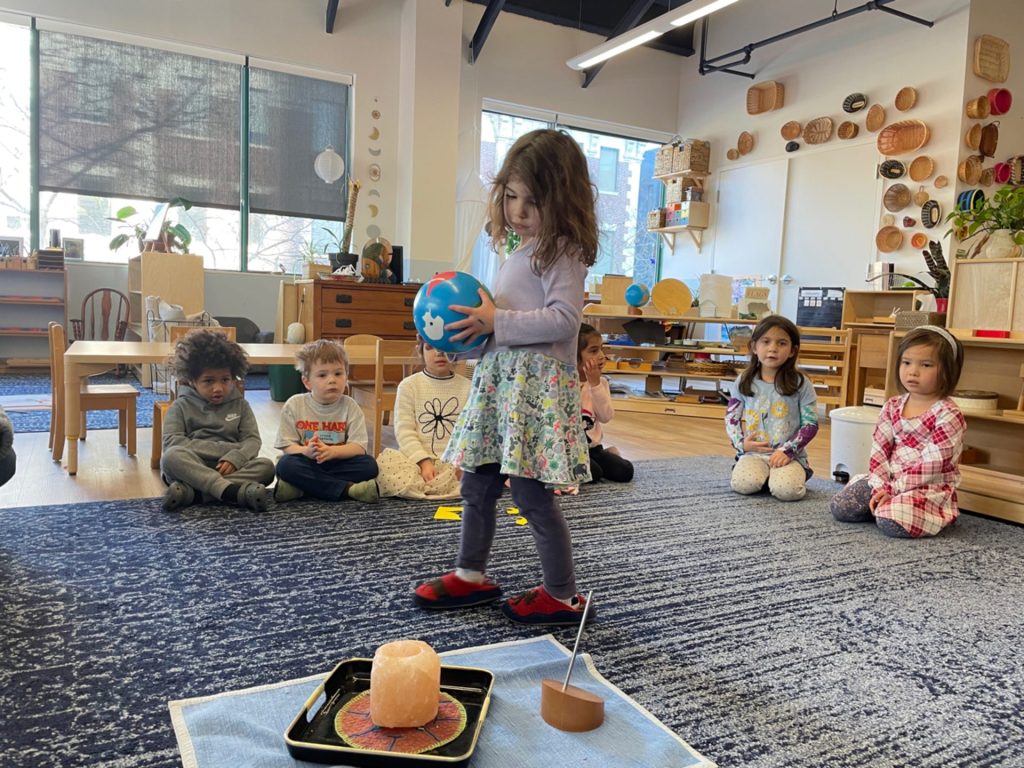
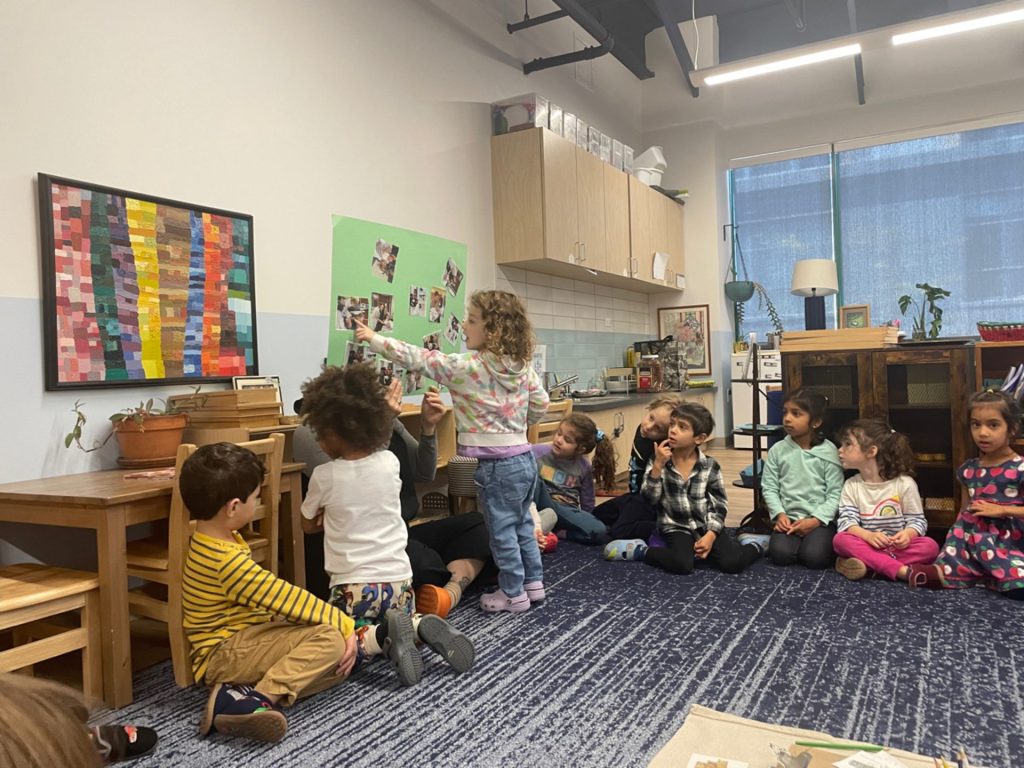
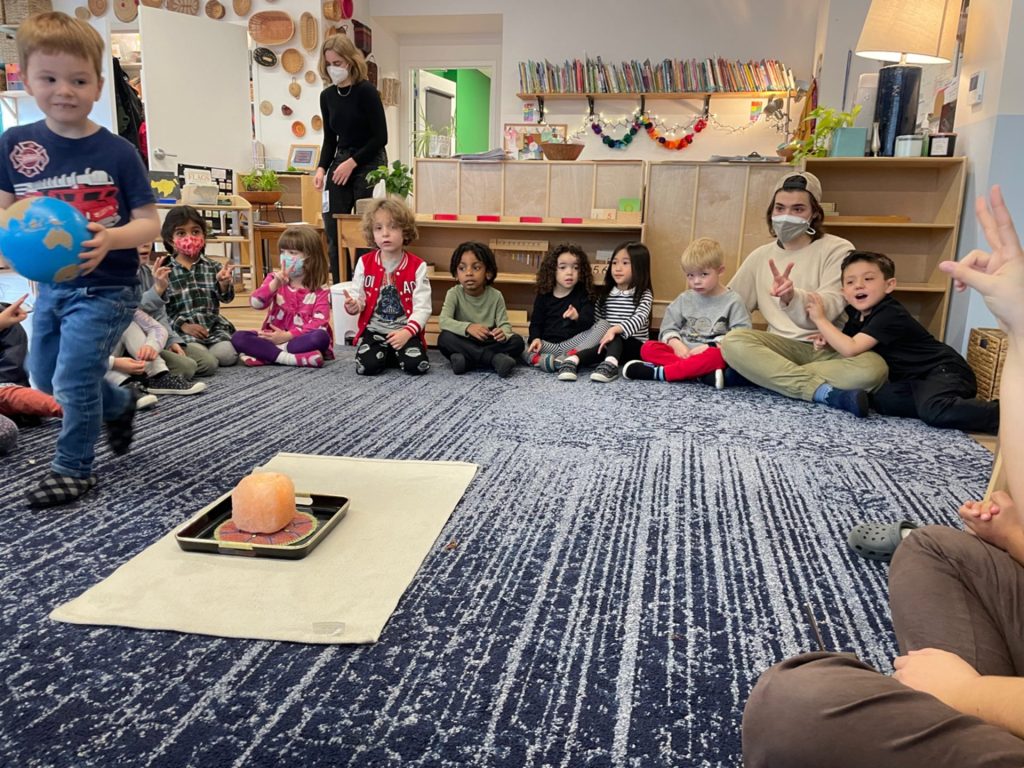
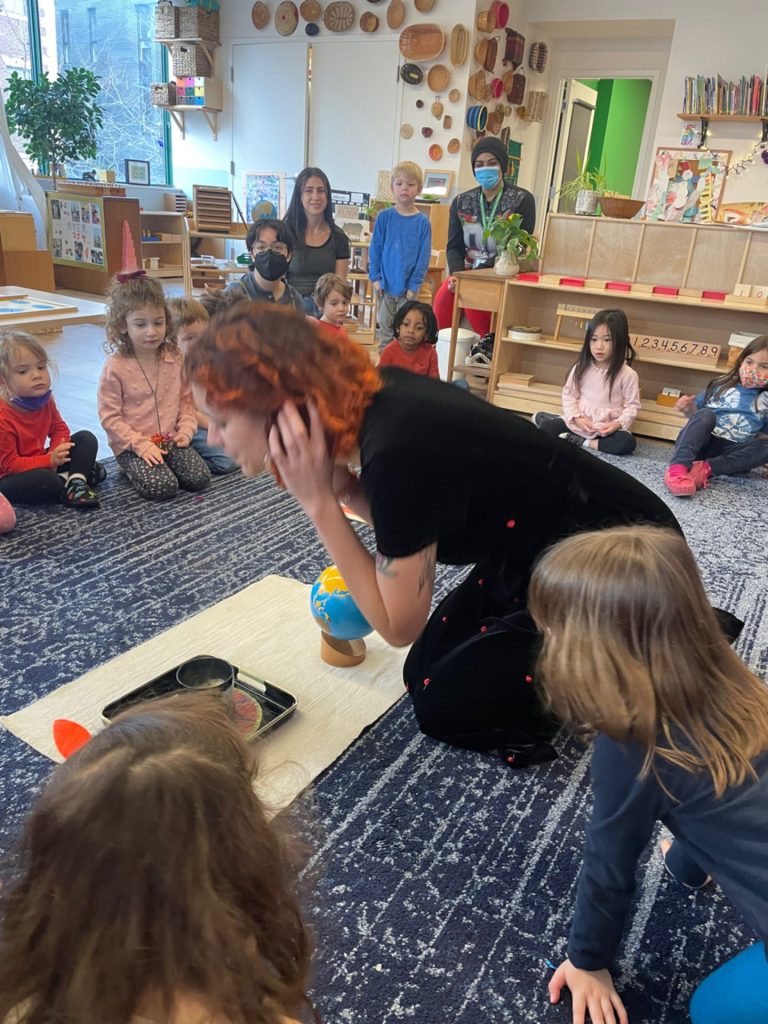
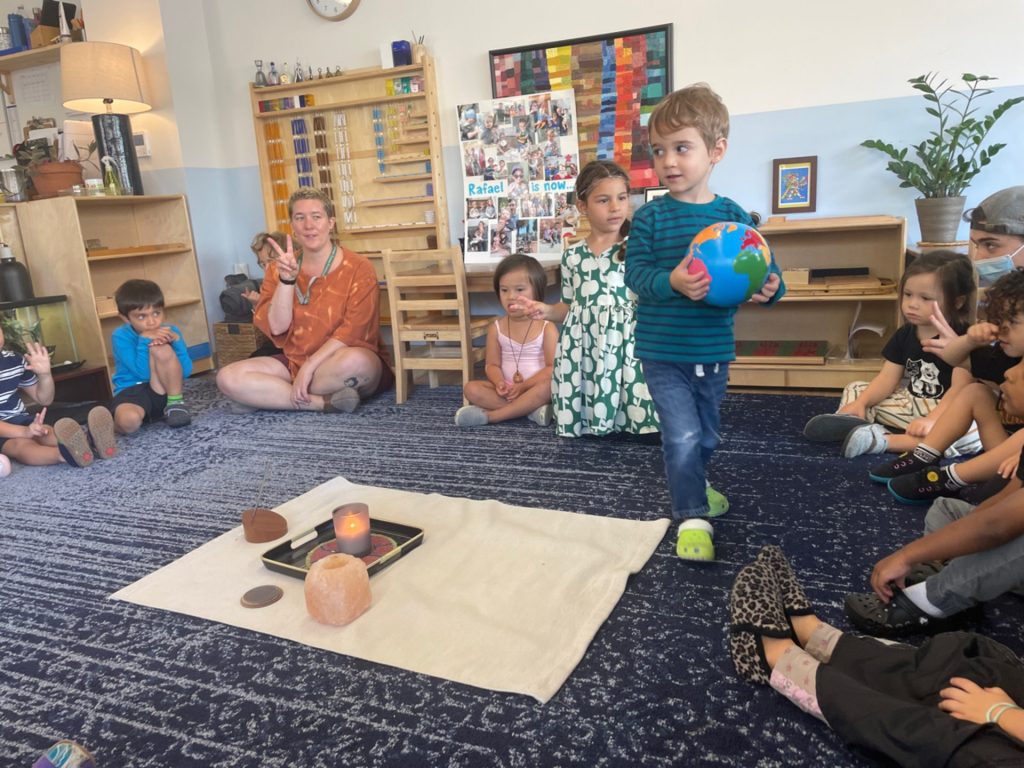
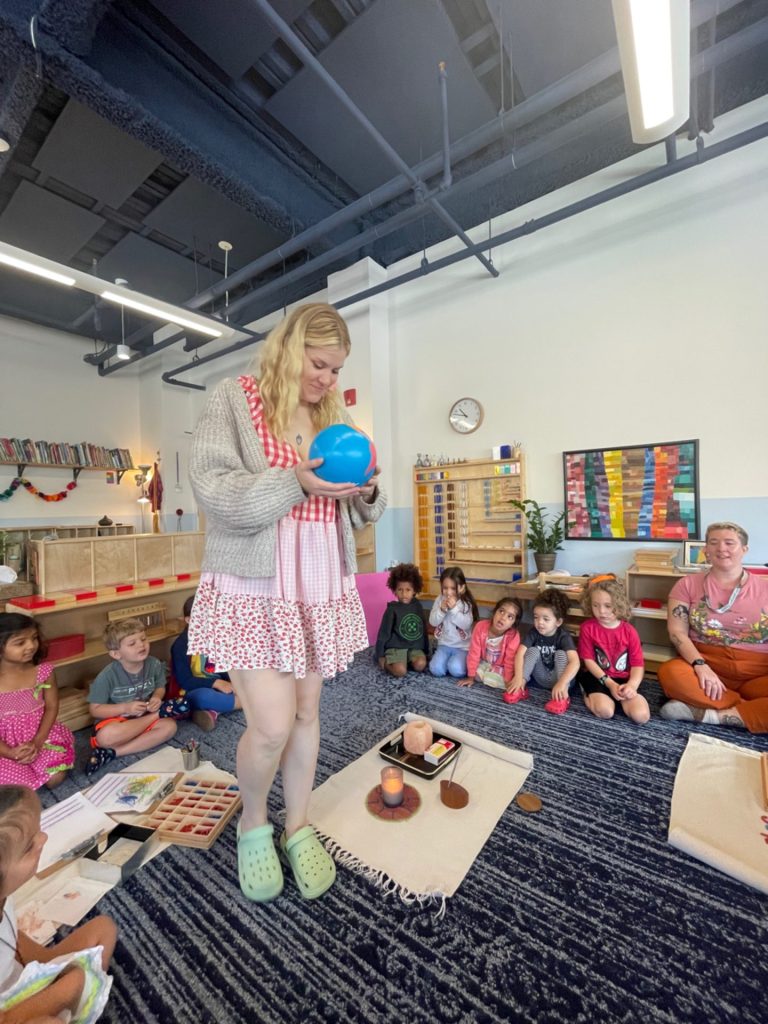
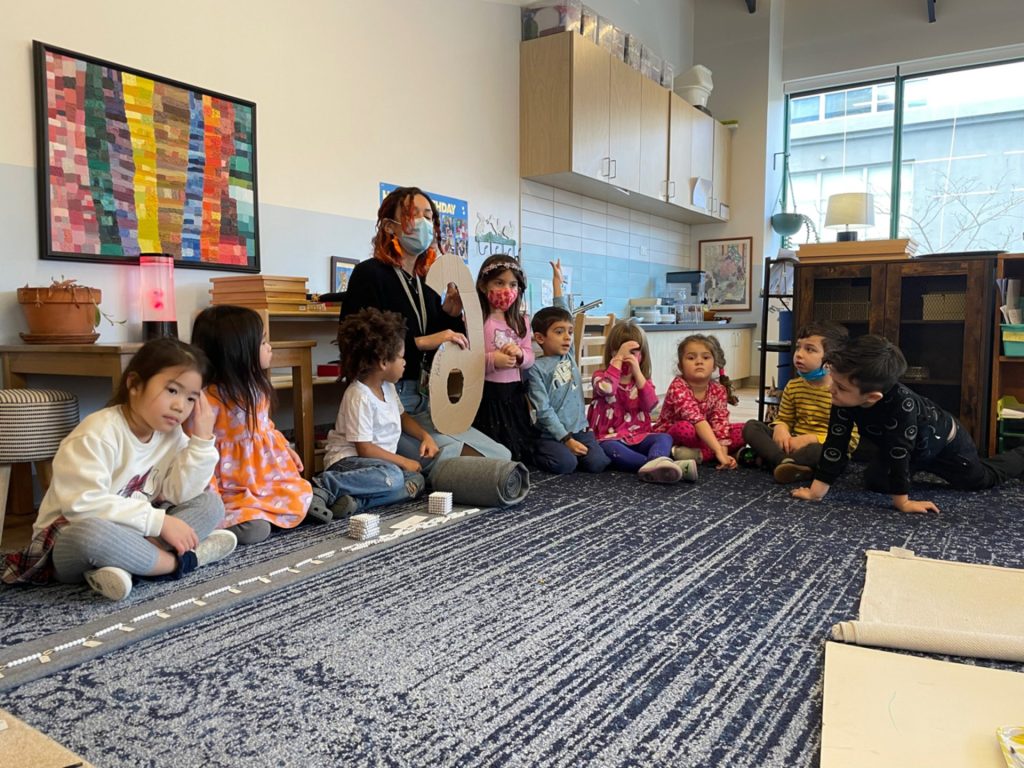
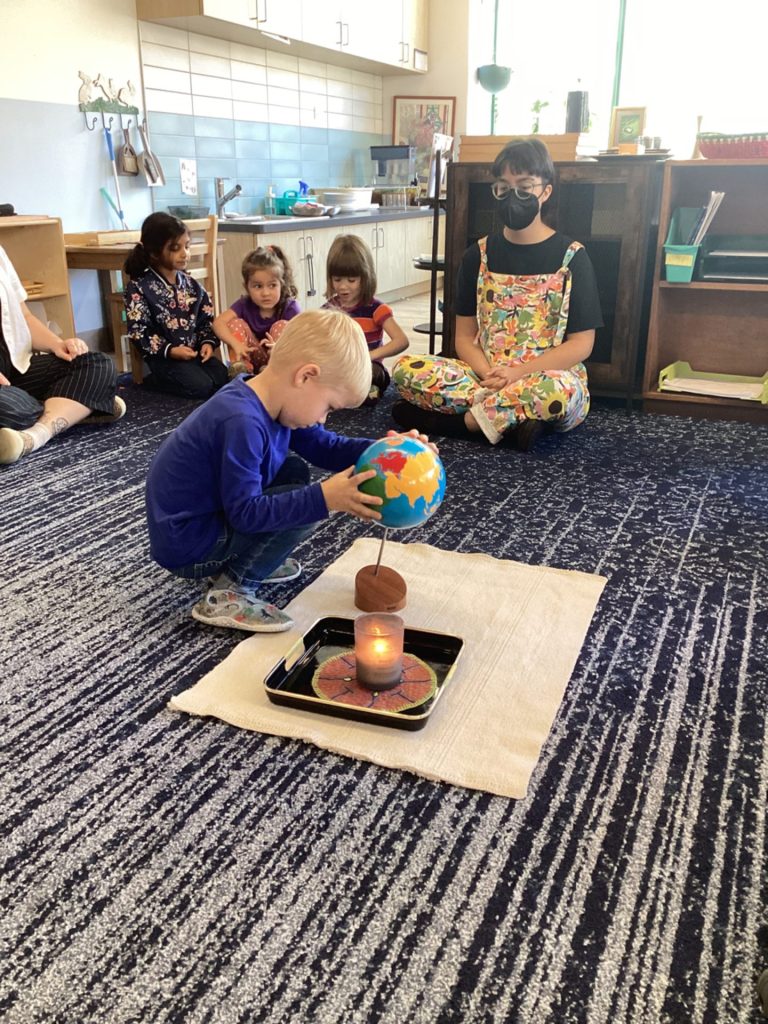
Birthday Circle- Birthday circles can be a very special event to commemorate the passage of time in a child’s life- or even an adult! We celebrate these as a whole community by marveling at their birthday poster- should they choose to bring one-, offering birthday wishes, and watching them walk around the sun to celebrate each year they have been on Earth. Birthday circles give us all a chance to reflect on how each child has grown and developed in their time with us.
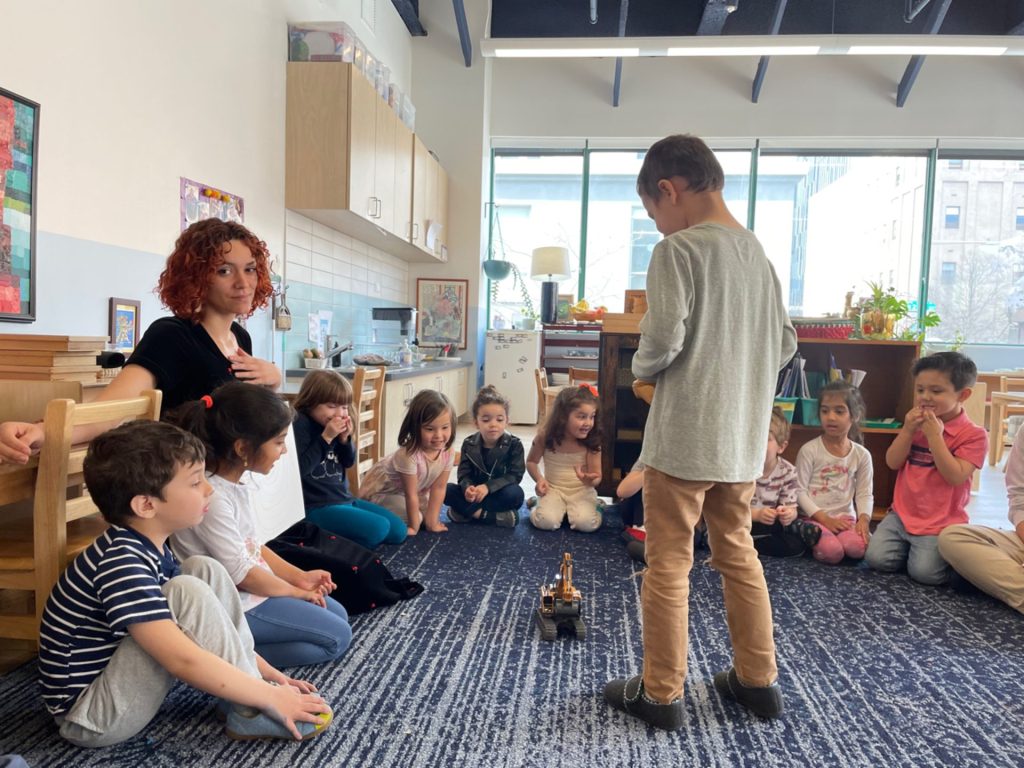
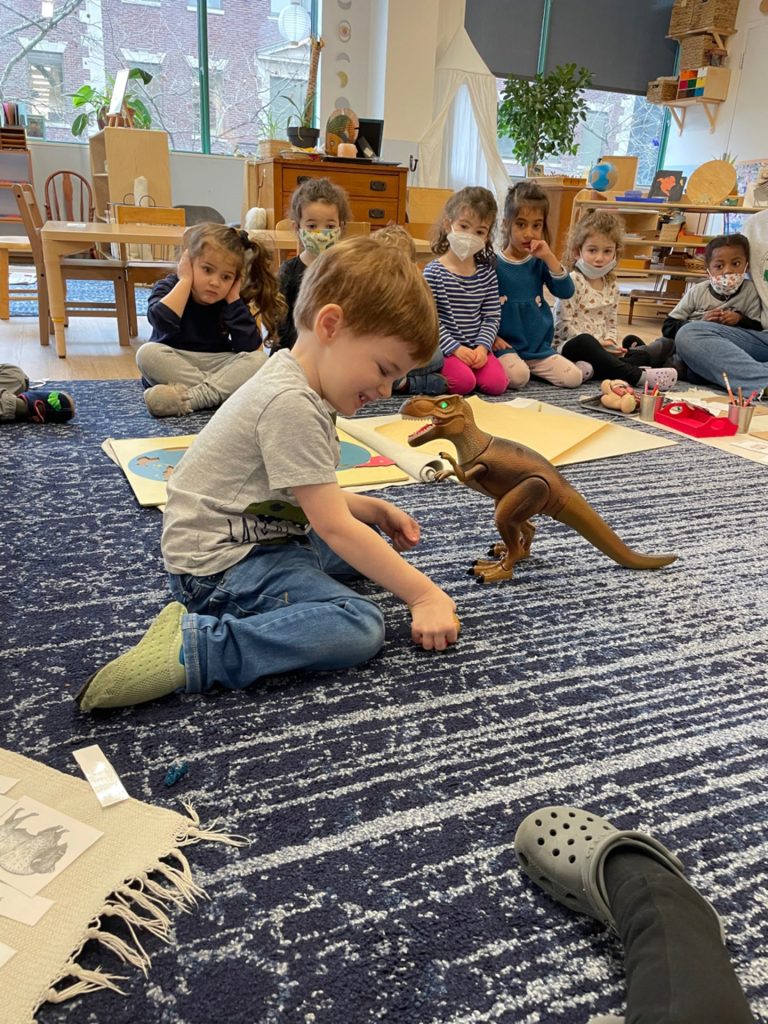
Show and Tell- Every Monday is show and tell! When it is your child’s show and tell, they will present to their peers, field questions and comments, and then dismiss each child one-by-one to get ready for lunch. This is often a child’s first experience of public speaking and it allows them to practice a new skill while talking about something beloved and familiar.
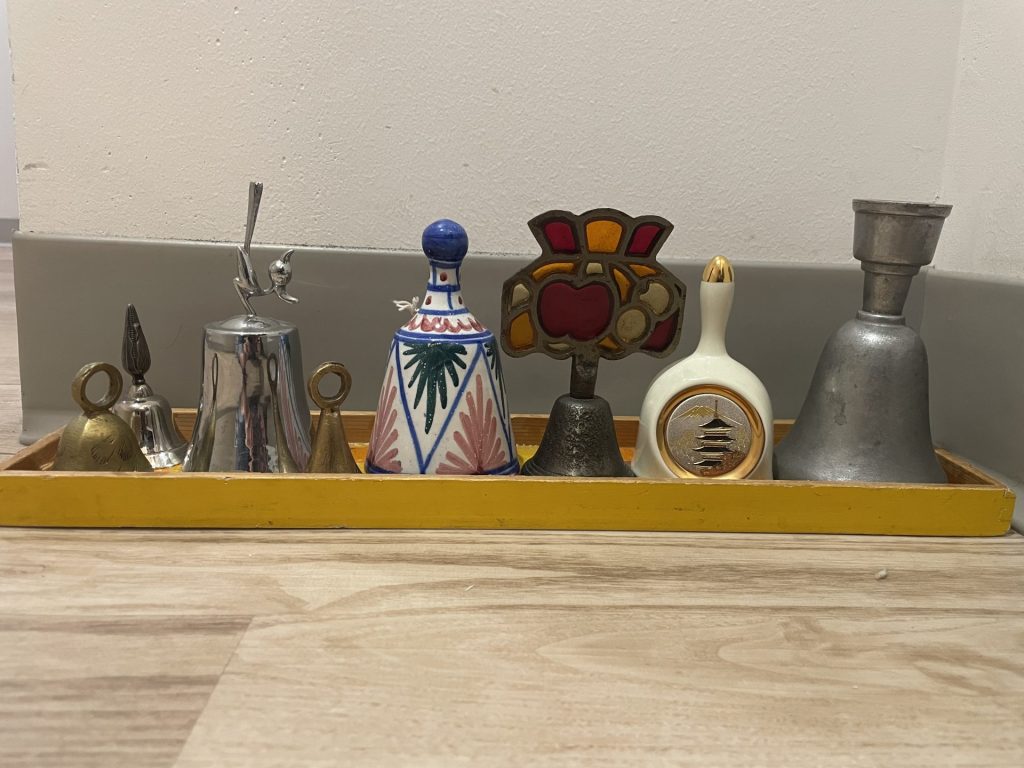
Group Games- We play lots of different group games like Animal Charades, Doggy, Doggy Where’s Your Bone, Simon Says, and a particular favorite- the Bell Game. We have a set of different bells made of various materials. The children close their eyes while the adult rings a bell and they guess which bell it was. This game promotes active listening and the refinement of the auditory sense.
Language and Vocabulary Enrichment- We love to use Circle as an opportunity to practice phonemic awareness or to provide vocabulary enrichment. An adult may lead our alphabet song which not only names the letters but also gives the associated sounds. Or perhaps we might introduce the language for parts of a pitcher or a pencil. Children from three to six are especially thirsty for the specific language associated with their everyday life.
Science Circle- Teacher Milo has been conducting Science circle which has really taken off this year! Every week they demonstrate a scientific concept like magnetism, states of matter, sound amplification, etc. The children really look forward to Science circle.
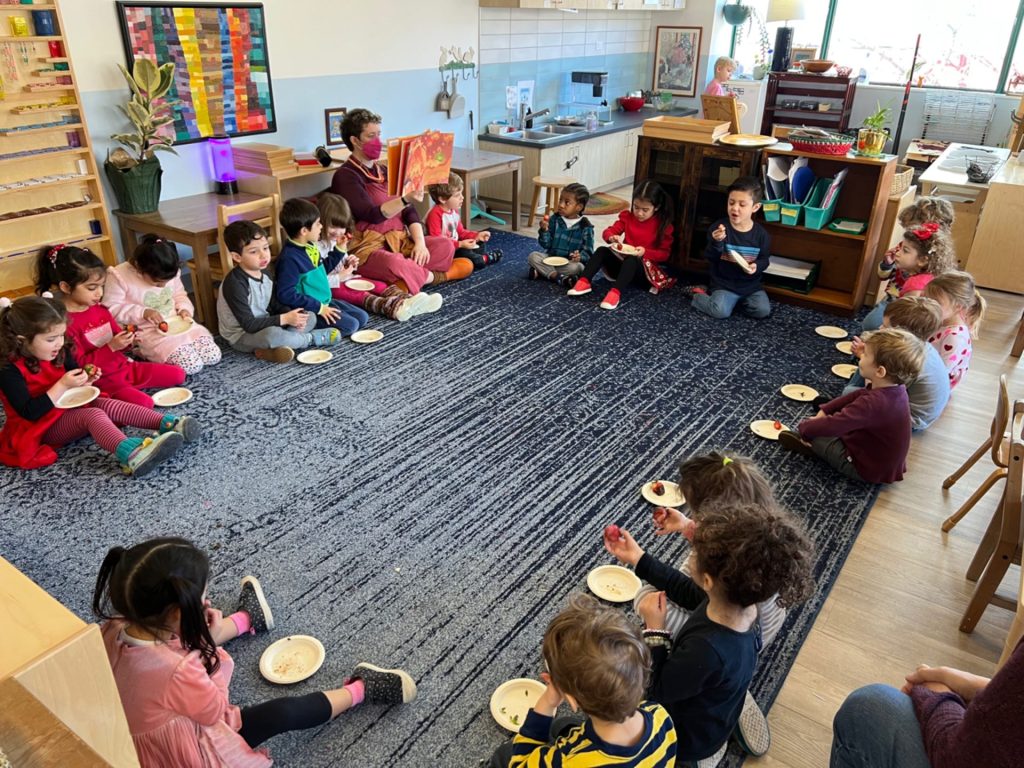
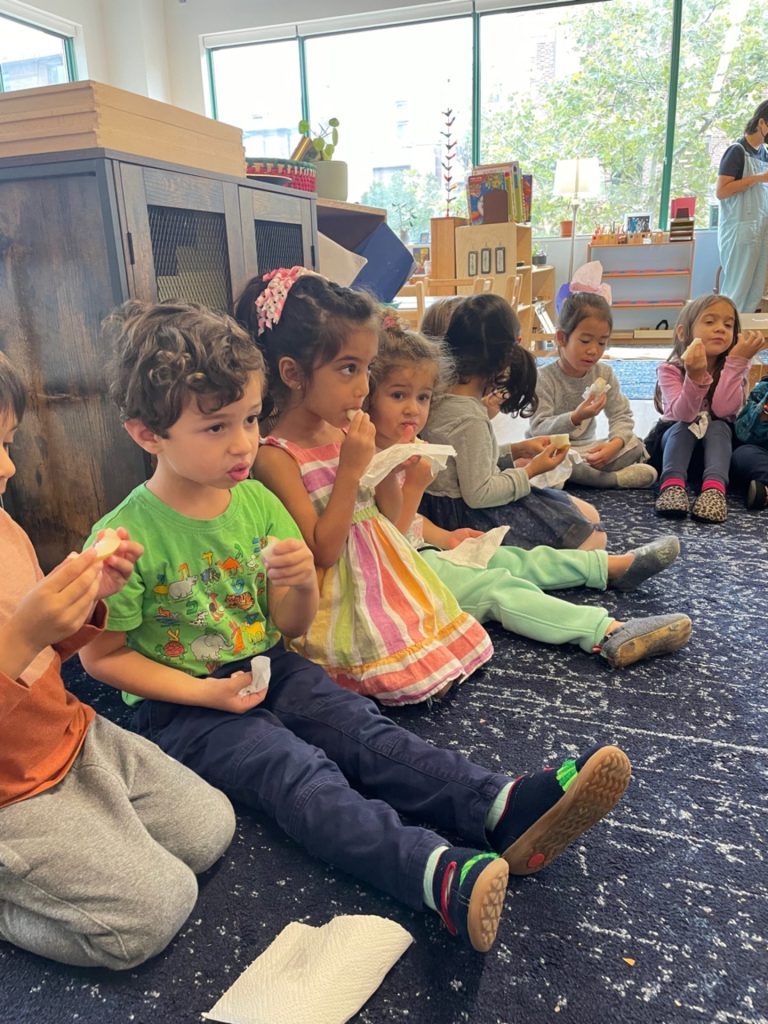
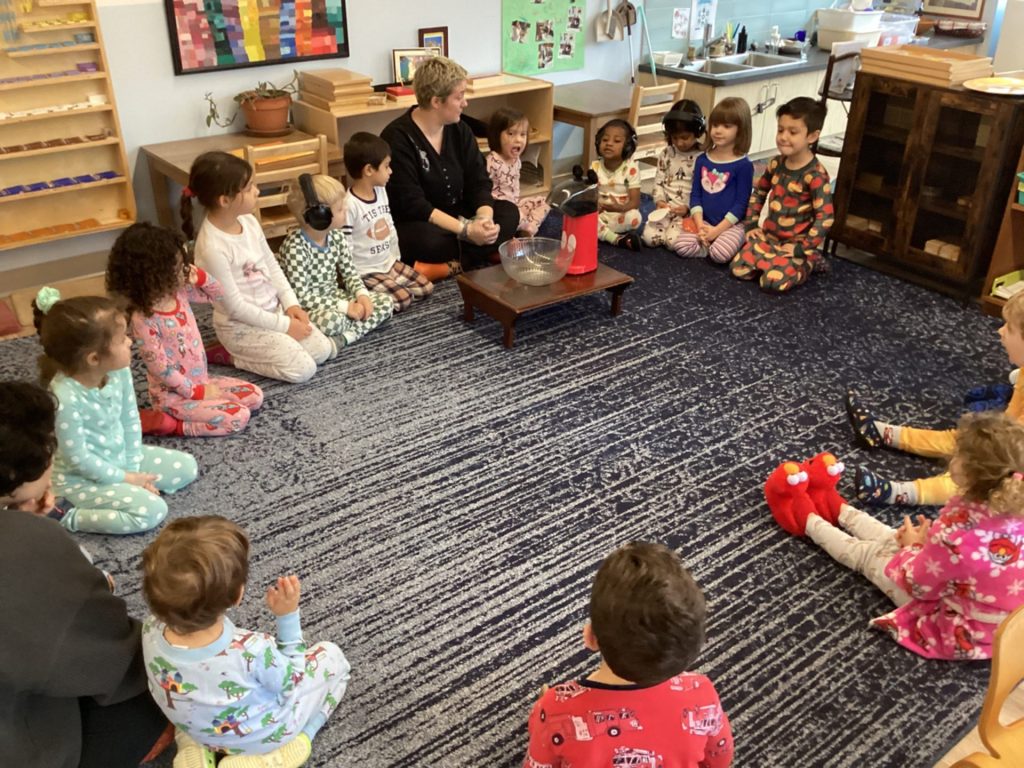
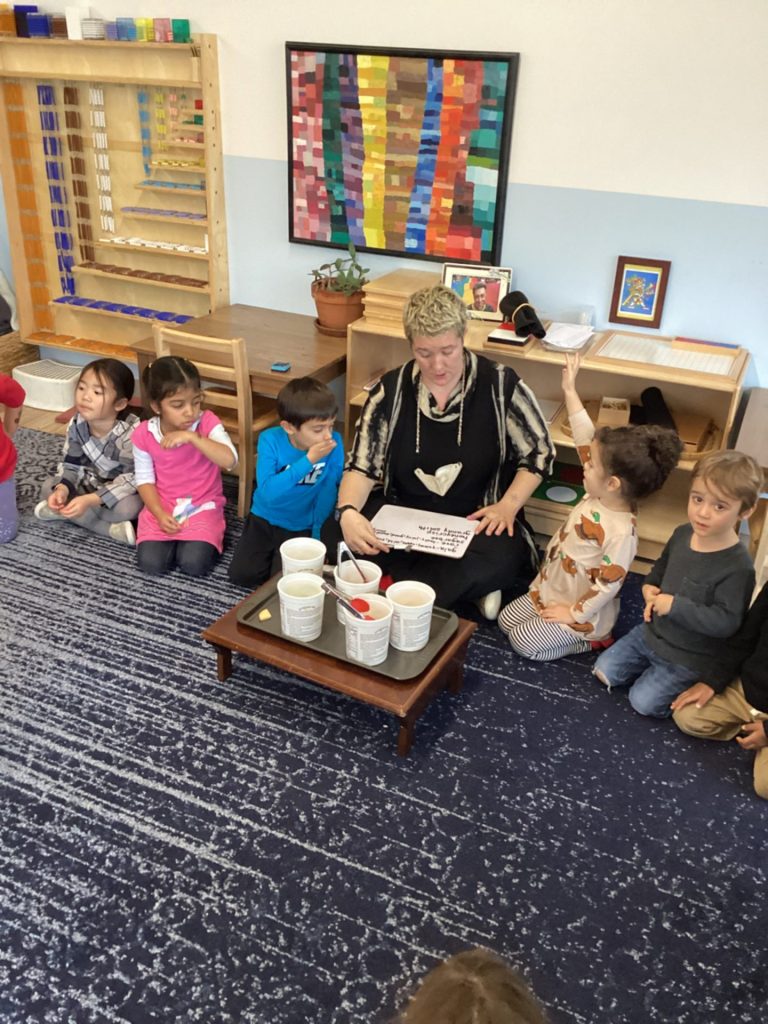
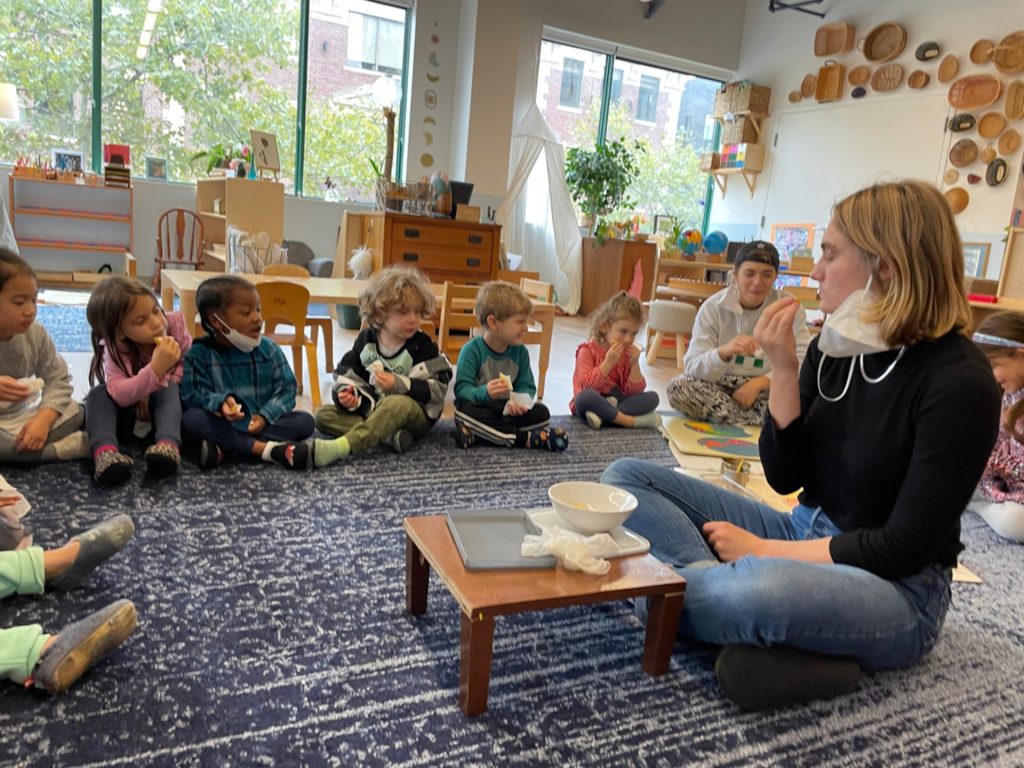
Tasting Circle- We try to do a tasting circle at least every season. It’s a fun way to try new foods with none of the pressure associated with mealtimes. Afterall, it’s just a taste! In the fall, we tasted different types of apples and Juliette brought in Asian pears for everyone to try at circle in honor of Chuseok. In the winter, we tried cranberries prepared in different ways and a variety of citrus fruits. Soon, to celebrate Ramadan, we will be tasting dates at circle. In the spring, we will try different types of potatoes, varieties of radishes, and kinds of herbs. In summer, we will sample various berries. Maybe we’ll even try edible flowers!
Singing Circle- Every Friday at afternoon Circle, each child is invited to sing a solo. If they so choose, they can sing any song they want in front of the whole group. It’s fun for the children and it also gives them the chance to practice performing for a group. Even if they do not choose to become singers, it is valuable practice to perform in front of their peers.
Book Discussions- When we read a book at circle, we try to leave enough time to ask lots of questions along the way. We might ask them to guess what will happen next or to explain why they think something happened. We might ask the group to guess what the page is about just from looking at the picture or how they would feel if they were in the story. These pauses and questions encourage reading comprehension and analytic reading.
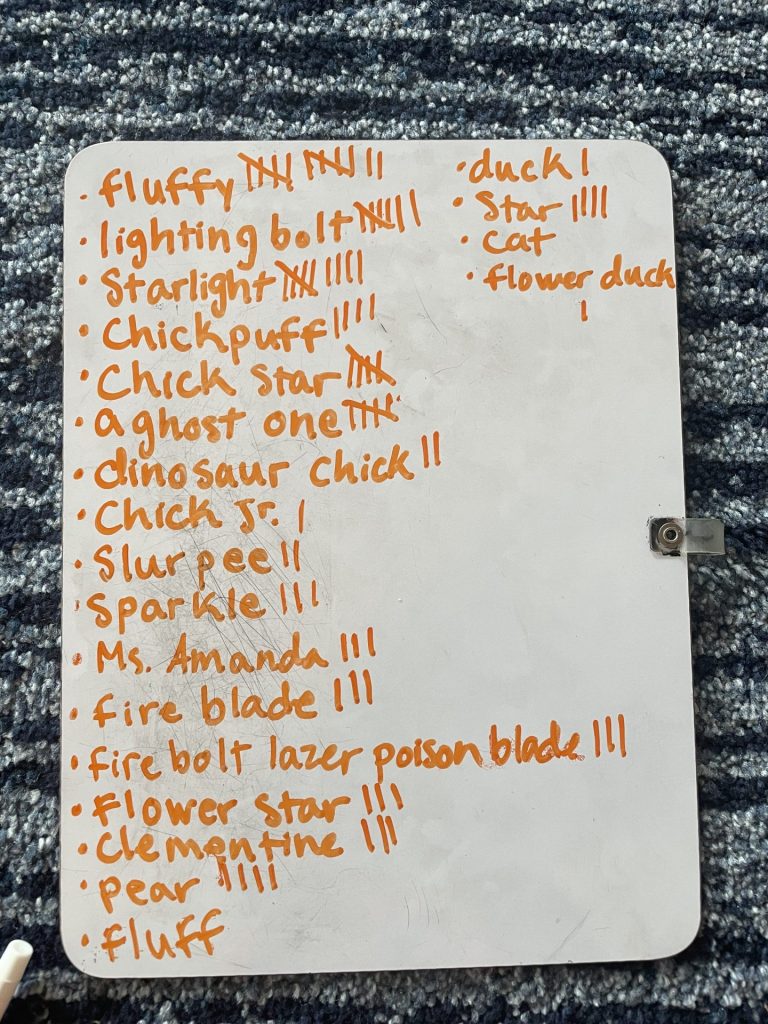
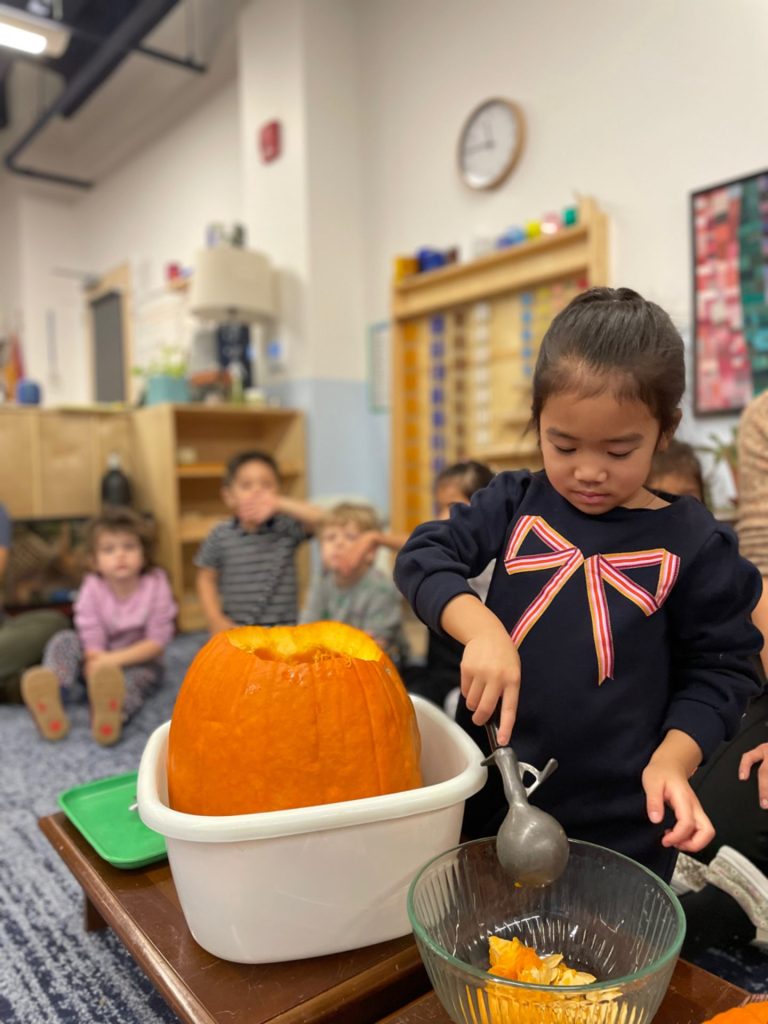
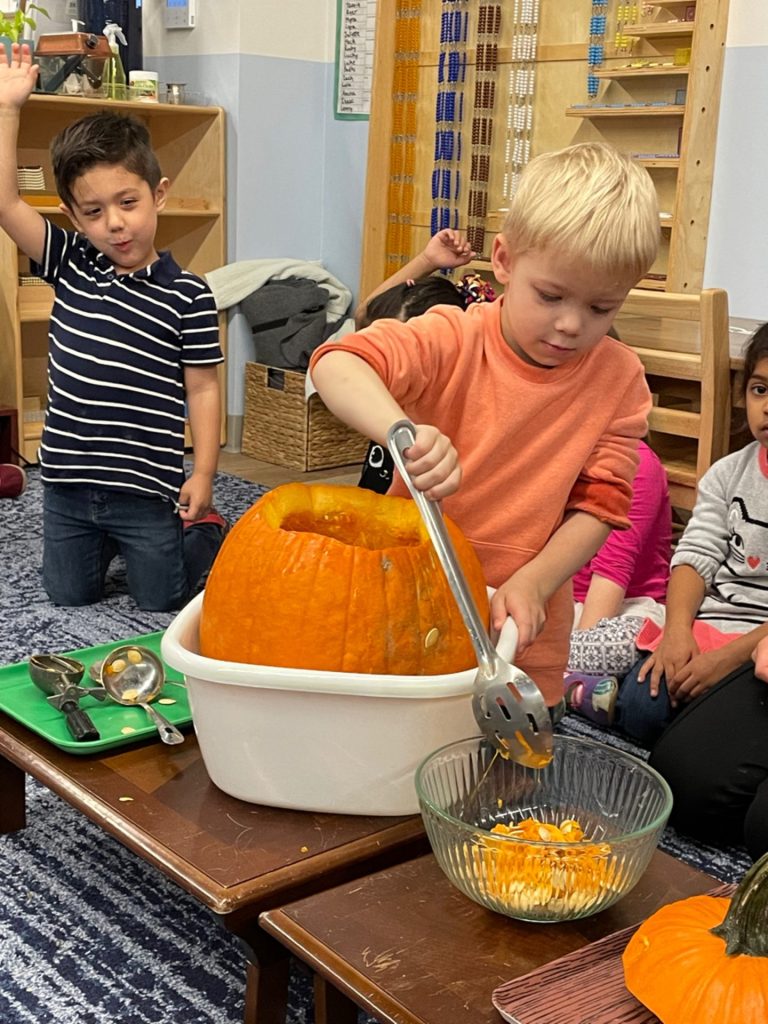
Special Projects- Carving pumpkins, naming chicks, writing stories, writing thank you notes or birthday cards, writing letters to children who are no longer at Greene Towne- these are all things we might do at Circle together.
Why do we have circle anyway?
Circle offers your child the opportunity to practice so many skills! They practice patience when they wait for their turn to speak. They practice listening skills when their peers are speaking. They practice emotional regulation when they sit calmly with a raised hand. They practice planning when they are asked what work they would like to do when dismissed. Circle encourages social cohesion and is an important part of creating a sense of community. We sit as a circle rather than in rows facing the front to underscore the fact that we are all of equal importance. It reinforces that it is not the adult’s class, it is the children’s community.
How do the three circles differ?
Our morning Circle is the shortest of the three. We often do a short meditation, breathing exercise, or yoga sequence. To be dismissed from this Circle, the children must practice the executive function of planning. They are asked what work they would like to choose before they get up from Circle. Planning what you want to do is very different from choosing something from the shelf on an impulse. Planning is a skill that must be practiced and your child practices this every morning when they leave circle.
The Circle before lunch is typically longer than morning Circle. This is when we will mostly likely do Show and Tell or a Birthday Circle. This is also the time when we would have a whole group discussion.
The afternoon Circle is usually about 15 minutes long. On Wednesday, this is when Teacher Milo does Science Circle and we have Singing Circle on Friday.
Suggestion for home
Although it would be odd to organize a Circle at home, you could start a Family Meeting. You could discuss issues that come up at home, brainstorm solutions together, and decide as a family what to do in the future. For instance, maybe getting out of the door in the morning is tricky. You could sit down together as a family, each share what you notice about the morning, how it impacts you, and what you would like to do differently. Then craft a solution together that everyone can contribute to. One thing to avoid would be making all Family Meetings about things that are not going well. Once and a while, it might be wise to talk about things you are excited about, proud of, or thankful for.
Upcoming Events
- 3/8- Second Round of Parent Teacher Conferences
- 3/15- SCHOOL CLOSED- Professional Development
- 3/20- Parent Ed Workshop- Sensitive Periods
- 3/25-3/29- SPRING BREAK
Thanks!
Amanda, Maggie, Bailey, Jamie, Milo, & Shawn
Parent Ed Workshop: Montessori Positive Discipline with Chip DeLorenzo, M.Ed.
Read More